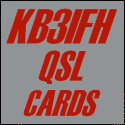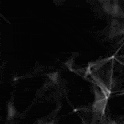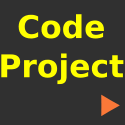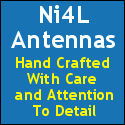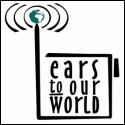Archive for the ‘Videoblogging’ Category
 24 December to 31 December: 1st Ever Winter Olivia Digital Mode QSO Party
24 December to 31 December: 1st Ever Winter Olivia Digital Mode QSO Party
Special Event Week: Dec 24-Dec 31, 2023
The 1st annual Olivia Digital Mode on HF Winter QSO Party, celebrating 20 years of Olivia.
The Olivia Digital DXers Club (we’re on ClubLog!) is holding the first annual Winter Olivia Digital Mode on HF QSO Party, starting at 00:00 UTC, 24 December 2023, and ending at 23:59 UTC, 31 December, 2023.
Minimum logging requirements: Callsign worked, Band (or Frequency), Mode (I.e., Olivia 8/250, or other variations), Time QSO Started. You can log more than that, but for the sake of the certificate, please send at least the minimum information per QSO, to NW7US (email is on QRZ profile). Logs can be any common method, from an .ADI file, to a screen shot.
Full details are on our website:
https://OliviaDigitalMode.org
Olivia, a Multi-Frequency Shift Keying (MFSK) radioteletype digital mode, is an amateur radioteletype protocol designed to work in difficult (low signal-to-noise ratio plus multipath) propagation conditions on shortwave radio (i.e., high-frequency, or HF) bands. The typical Olivia signal is decoded when the amplitude of the noise is over ten times that of the digital signal!
Here is an introduction to the Olivia digital mode:
73 de NW7US
 Better Than FT8? Olivia Digital Chat Mode – Raleigh Amateur Radio Society Video
Better Than FT8? Olivia Digital Chat Mode – Raleigh Amateur Radio Society Video
Olivia is the digital communications mode on shortwave (high frequency sub band, or, HF) for amateur radio operators who want more than the “Check Propagation” FT8 mode. This video is an introduction that was presented to the Raleigh Amateur Radio Society ( https://www.rars.org/ ) on December 12, 2023, presented by Tomas Hood, NW7US
Olivia information can be found, here:
https://OliviaDigitalMode.org
Olivia, a Multi-Frequency Shift Keying (MFSK) radioteletype digital mode, is an amateur radioteletype protocol designed to work in difficult (low signal-to-noise ratio plus multipath) propagation conditions on shortwave radio (i.e., high-frequency, or HF) bands. The typical Olivia signal is decoded when the amplitude of the noise is over ten times that of the digital signal! It is commonly used by amateur radio operators to reliably transmit ASCII characters over noisy channels (slices of high-frequency spectrum — i.e., frequencies from 3 MHz to 30 MHz; HF) exhibiting significant fading and propagation phasing.
The Olivia digital modes are commonly referred to by the number of tones and the bandwidth used (in Hz). Therefore, it is common to express the Olivia digital mode as Olivia X/Y (or, alternatively, Olivia Y/X ), where X refers to the number of different audio tones transmitted, and Y refers to the bandwidth in Hertz over which these signals are spread. Examples of common Olivia modes are, 8/250 (meaning, 8 tones/250-Hertz bandwidth), 16/500, and, 32/1000.
The protocol was developed at the end of 2003 by Pawel Jalocha. The first on-the-air tests were performed by two radio amateurs, Fred OH/DK4ZC and Les VK2DSG, on the Europe-Australia propagation path in the 20-meter shortwave radio amateur band. The tests proved that the Olivia protocol (or, digital mode) works well and can allow regular intercontinental radio contacts with as little as one-watt RF power (when propagation is highly-favorable). Since 2005, Olivia has become a standard for digital data transfer under white noise, fading and multipath, flutter (polar path) and auroral conditions.
Olivia can perform nearly as good as the very popular WSJT mode, FT8, and better than FT4.
See you on the waterfall!
73 de NW7US
 I Am Back After Life Distractions
I Am Back After Life Distractions
The last three years have been, well, challenging.
In 2021, I became ill with Covid. That was rough, but I bounced back. That bout with illness caused me to lose my job, though, because I was ill too long. What is worse is because I was not hospitalized, I did not fall under the protections of “disability,” and had to step down from my employment at that time. After I recovered, I found employment.
In 2022, I again fell ill to a second Covid. That illness was significantly worse! I nearly WAS hospitalized, but I resisted this, and hung on by a thread. I made it through, though the illness lasted a lot longer the second time around. Because I was ill for about five months, I again had to step down from employment. This second Covid was the worst illness I have ever experienced, physically, emotionally, and financially. I am thankful for my friends and family that were very supportive.
After I recovered, I found employment in late 2022. It took a while for my health to stabilize, but the new job leadership has been supportive. I have been happily working at this new job since late 2022.
But, the challenge to recover was high. I sought answers.
In December 2022, I was diagnosed with Primary Hyperparathyroidism. Sure enough, the many tests I endured confirmed that I had more than one tumor in at least two of my four parathyroid glands (we each have four of them, because we’re given redundancy for this critical body part).

We each have four parathyroid glands. They are on the back side of the thyroid. The regulate the body’s calcium. Calcium is critical to all body functions and health.
I had surgery at the end of February 2023 to remove these tumor-riddled glands. The surgeon, once in my neck, found that THREE of my four glands were tumorous! He removed the three. I now have just one parathyroid gland.
Recovery has gone well. My health is improving nicely. It is like a switch was flipped, and I no longer have some of the debilitating symptoms like brain fog, extreme fatigue, and an out-of-control metabolism. I have a stable function of the remaining parathyroid gland, and that is supporting the proper function of the rest of my body. It is amazing how the whole body relies on these four glands for running correctly!
All of these challenges of the last few years caused enough distraction that my YouTube channel, and my writing, here, as well as other hobby activities, suffered my absence. Now that I am getting back on my feet with my health, and because my job continues nicely, I am beginning to spend some energy and time on these hobby areas. I plan on creating and releasing a few series on amateur radio, radio propagation, and space weather, on my YouTube channel. If you are already a subscriber, you probably saw my latest video where I announce that I am, indeed, back:
If there are topics that you would like me to cover in the new educational videos I am planning and will create, please let me know with a comment to this post, or, look my email address up on my profile at QRZdotCom. I will do my best to answer your questions and cover amateur radio and space weather topics in which you are interested.
If you are not yet familiar with my YouTube channel, you can find my channel here: https://YouTube.com/NW7US — Please subscribe and hit the bell to be notified when I release new video content.
I will also post more often on this site. I appreciate the opportunity to share with you my love of amateur radio, and the science of propagation and space weather which affects our radio signals.
Best regards,
Tomas, NW7US
https://NW7US.us
 Part 2 of 2: Life-changing Moment and Solar Cycle 25
Part 2 of 2: Life-changing Moment and Solar Cycle 25
From the RAIN HamCast episode #57, 2021-XII-25 (used with permission):
RAIN’s Hap Holly/KC9RP spoke with Tomas recently about Solar Cycle 25. This is the second and final excerpt from their discussion.
From the introduction to The RAIN HamCast, Episode #57:
In this episode, we continue our discussion with Tomas Hood/NW7US, the author of many writings about space weather and effects of solar activity the past 20-plus years.
(Part 1 of 2 can be found here: Episode #56, https://www.youtube.com/watch?v=HnuSOXhFELQ)
Tomas has been a short wave enthusiast since 1973, a ham operator since 1990, and is a United States Army Signal Corps veteran today. He launched the first civilian space weather propagation website, HFRadio.org, in the mid 90’s; HFradio later spawned SunSpotWatch.com; at press time Sunspotwatch.com is being revamped for the new Solar Cycle 25.
Tomas has contributed to the Space Weather Propagation column in CQ magazine for over 20 years, and for The Spectrum Monitor magazine since 2014. A product of the Pacific northwest, Tomas resides now in Fayetteville, Ohio.
RAIN’s Hap Holly/KC9RP spoke with Tomas recently about Solar Cycle 25. This is the second and final excerpt from their discussion.
Here is the second part of the two-part interview:
If you missed part one of this conversation, you’ll find it as RAIN Hamcast #56 both on therainreport.com and on the RAIN Hamcast page on YouTube, as well as here: Episode #56, https://www.youtube.com/watch?v=HnuSOXhFELQ.
RAIN Hamcast #58 will post January 8, 2022. Hap Holly/KC9RP edits and produces this biweekly ham radio podcast. It is copyright 1985-2021 , RAIN, all rights reserved. RAIN programming is made available under a Creative Commons license ; you are encouraged to download, share, post and transmit the RAIN Hamcast in its entirety via Amateur Radio. Your support and feedback are welcome on therainreport.com. Thanks for YouTube Technical Assistance from Tom Shimizu/N9JDI. I’m Will Rogers/K5WLR bidding you very 73 and 44 from the Radio Amateur Information Network.

KEEP ON HAMMING!
Footnote: Yes, NW7US misspoke about the time it takes sunlight to travel from the Sun to the Earth. He meant that it takes sunlight and radio waves just over 8 minutes to make that trip…
 A Different Approach to a New Year: the Ham Systems Think!
A Different Approach to a New Year: the Ham Systems Think!
What is the most important aspect of life? Having fun! (Of course!).
Perhaps it is unusual to wax philosophical in an amateur radio forum, but I am going out on a limb to share a perspective that hopefully is refreshingly new and full of life: Systems thinking — an amateur radio approach.
What I’m sharing herein, I find very intense, invigorating, challenging, and motivational! The more I think about amateur radio with this perspective–the Systems Thinking perspective–the more fun I’m able to define, and then accomplish.
In my opinion, this approach to life is REVOLUTIONARY! Why isn’t this knowledge distributed far and wide? Why aren’t these precepts taught in the schools for young children, so that they can be equipped for a life full of accomplished purpose? Perhaps it is due to the deceptive simplicity of approaching life with the perspective of Systems Thinking.
SYSTEMS THINKING AND AMATEUR RADIO
What is Systems Thinking?
In a very simplistic sense, a system is any group of parts that make up one complex whole. Each part cannot function as the whole, and each part interacts with other parts, such that this behavior affects that end result which is expressed by the whole.
Think about a motorcycle. Let’s play with that thought: I disassemble my motorbike in your living room. Once the bike completely taken apart and the parts are scattered all over your living room floor, can any one of those parts support my riding it out to the countryside, and back again? No. Only the bike can act, when it is made whole again, as a motorbike. But, even if the individual parts, doing their part well, try to be the bike all by themselves, but fail, in the end realize that the parts are very important. Each part has a place and a job. Each part belongs.
By now, as you think about this, you probably realize that there is a difference between collections, and systems, of course. A bag of rocks is not a system. A motorcycle is a system. A bag of motorbike parts is not a motorbike. The assembly of the motorbike parts does make a motorcycle.
What does this have to do with amateur radio?
The amateur radio service (hobby) is a system, not a collection. There are many parts–and one of the most important component of the amateur radio system is you and me. We interact with each other, exchanging knowledge, reports, friendships; we each function, lending our functioning the the autonomous self, the amateur radio service.
It takes more than one of us to make up the amateur radio service. It would take at least two amateur radio operators, at the most extreme emaciated existence as a public service. It is obvious that one ham, all by herself, does not make the amateur radio service. No one of us is the amateur radio service, by ourselves. We need each other in order to have a ham radio community–the amateur radio service. Ourselves, our radios, antennas, computers, knowledge, schedules, and so on, are all parts of the big system with which we participate in our community.
Let that sink in.
Ponder the long-term repercussions of this revelation: We need each other, and we need our resources (time, skills, knowledge, radios, etc.).
How do we shape our System? What will elevate our System so that it is effective? And, so we begin to do this, SYSTEMS THINKING.
Please read, and ponder these thoughts, as you read through this article:
https://thesystemsthinker.com/a-lifetime-of-systems-thinking/
Additionally, you should check out this video–it is great!
Bonus (not necessary but still VERY good deeper dive):
In my estimation, Dr. Russell Ackoff is amazingly wise, and inspiring!
SYSTEMS THINKING
At the moment, I am studying and trying to implement system thinking. It is the topic I am mostly studying right now.
The following is an introduction to Systems Thinking:
https://thesystemsthinker.com/
Download this useful paper that helps you understand system thinking:
http://nw7us.us/systems-thinking/Introduction-to-Systems-Thinking-IMS013Epk.pdf
I would very much like to hear your thoughts on all of this. Seriously. Take your time. But, let’s start wading through this pool of refreshing water…
Happy New Year!
Tomas Hood
NW7US
Addendum: I do not necessary agree with every perspective, conclusion, or point made by Dr. Russell Ackoff. Never-the-less, the overarching idea of systems thinking seems valid, and is worth considering.
 Just Get On The Air! (A Makeshift Temporary Dipole Shortwave Antenna)
Just Get On The Air! (A Makeshift Temporary Dipole Shortwave Antenna)
It might not take as much antenna as you may think would be necessary to make two-way contacts on shortwave radio (as an amateur radio operator putting an HF transceiver on the air). However, often, makeshift antennae are effective enough to be viable–just look at all the contacts many amateur radio operators make with their low-power (QRP) rigs (transceivers) using short, helically-wound, mobile antenna sticks. If they can work magic with such inefficient antenna setups, surely your effort at an antenna would pay off to some degree. Right?
Of course, I want to make a proper dipole out of this example antenna. But, while I wait for the rest of the parts I need to complete this antenna project (pulleys and a ladder, and maybe a potato launcher), I’ve put this makeshift antenna on the air, with it just high enough so that I can enjoy some time on the shortwave bands.
With this antenna, I’ve made successful two-way voice and Morse code contacts (QSOs) with stations in Europe and across North America. I am able to tune it on the 60-, 40-, 30-, 20-, 15-, 17-, 12-, and 10-Meter bands. Reverse beacon detection picks up my Morse-code CW signals, especially on 40 meters (the band on which it is tuned physically).
The bottom line: just get something up in the air and start communicating. Improve things over time. You’ll have much fun that way.
73 de NW7US dit dit




